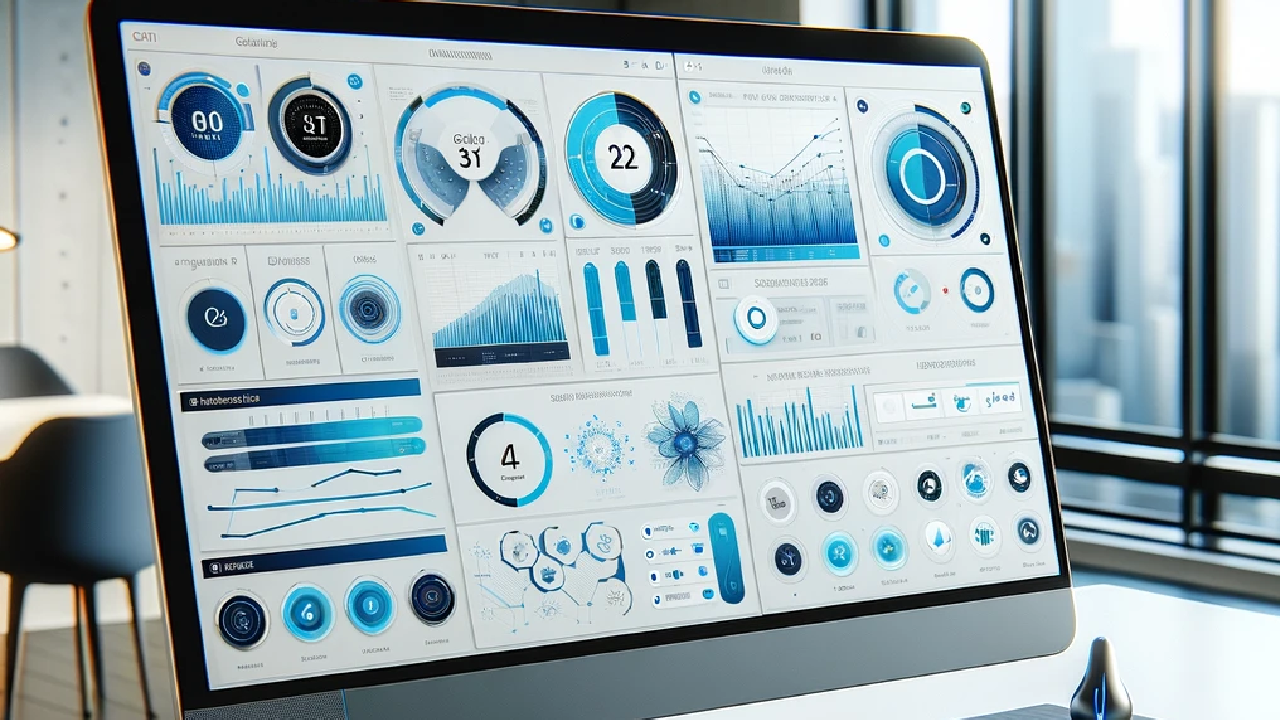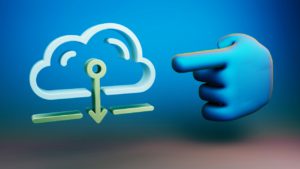In the era of big data, the ability to effectively analyze and interpret vast amounts of information is crucial for business success. Data analytics software plays a pivotal role in this process, offering tools and capabilities that can transform raw data into actionable insights.
With a huge selection of options in the marketplace, choosing the right data analytics software becomes a crucial decision for businesses of all sizes. This decision can significantly impact an organization’s ability to make data-driven decisions, optimize operations, and stay competitive.
What is Data Analytics Software?
Data analytics software refers to tools and applications used for processing, analyzing, and visualizing data. These tools can range from simple data processing applications to complex software suites offering advanced analytics capabilities like predictive modeling, machine learning, and big data processing. The primary goal of these tools is to enable organizations to make sense of their data, uncover patterns, and derive meaningful insights.
The choice of data analytics software can have far-reaching implications for a business. The right software can streamline data processing, reveal hidden trends, improve decision-making, and ultimately drive growth and efficiency.
Conversely, the wrong choice can lead to wasted resources, data silos, and missed opportunities. Therefore, it’s essential to carefully evaluate various factors to ensure that the chosen software aligns well with the business’s specific needs and goals.
Overview of the Selection Process
Selecting the best data analytics software involves a comprehensive process that goes beyond just analytics tool comparison of features and prices. It requires a deep understanding of the business’s unique data requirements, technical capabilities, and long-term objectives.
This process includes assessing the types of data to be analyzed, the scalability of the solution, compliance and security needs, user accessibility, cost implications, and the vendor’s reputation and support structure.
By considering these factors, businesses can make an informed decision that not only meets their current needs but also positions them for future growth and adaptability in the ever-evolving landscape of data analytics.
The following sections will provide a detailed guide for selecting the best data analytics software for your company, providing a detailed explanation of each factor.
Understanding Your Business Requirements
Before diving into the specifics of data analytics software, it’s crucial to have a clear understanding of your business requirements. This understanding will guide you in choosing a software solution that aligns with your organizational goals and data analysis needs.
Identifying Business Goals and Objectives
- Clarify Business Objectives: Determine what you want to achieve with data analytics. Are you looking to improve operational efficiency, enhance customer experience, drive sales, or make informed strategic decisions?
- Specific Use Cases: Identify specific use cases for data analytics in your organization. For example, a retail business might focus on customer behavior analysis, while a manufacturing company might prioritize supply chain optimization.
Types of Data to be Analyzed (Structured vs. Unstructured)
- Understanding Data Types: Recognize the types of data your business deals with. Structured data is organized and easily searchable (like data in spreadsheets), while unstructured data includes text, images, and other formats that are not as easily categorized.
- Data Sources: Identify where your data comes from – internal systems, social media, IoT devices, etc. This will help in selecting software that can effectively integrate and process these data sources.
Scale of Data Analysis (Small, Medium, Large Scale)
- Assessing Data Volume: Estimate the volume of data you need to analyze. This will impact the software’s required processing power and storage capabilities.
- Future Growth: Consider not just your current data volume but also potential growth. Choose a data analytics software that can scale as your data needs expand.
Integration with Existing Systems and Data Sources
- Compatibility: Ensure the software can integrate seamlessly with your existing systems (CRM, ERP, etc.) and data sources.
- Data Import/Export Capabilities: Look for software that allows easy data import/export in various formats, facilitating smooth data flow across different business areas.
Understanding your business requirements in these areas is the first step in selecting the right data analytics software. It sets a foundation for evaluating technical features, user experience, and other crucial factors in the subsequent stages of the selection process.
Technical Features of the Software
After establishing a clear understanding of your business requirements, the next crucial step is to evaluate the technical features of the data analytics software. These features determine the software’s capability to handle your specific data needs and the quality of insights you can derive from your data.
Data Processing Capabilities
- Data Handling: Assess the software’s ability to handle the volume and variety of data your business generates. This includes the speed and efficiency of data processing.
- Data Cleaning Tools: Look for features that help in cleaning and preparing data, as quality data is key to accurate analytics.
Real-time vs. Batch Processing
- Real-time Analytics: If your business requires immediate insights (like e-commerce sites monitoring user behavior), ensure the software supports real-time data processing.
- Batch Processing: For less time-sensitive analytics, batch processing might be more efficient and cost-effective.
Data Visualization and Reporting Tools
- Visualization Capabilities: Effective data visualization tools (like dashboards, charts, and graphs) are essential for interpreting complex data sets and communicating insights.
- Custom Reporting: Check if the software allows for creating custom reports tailored to your specific business needs.
Machine Learning and Advanced Analytical Functions
- Predictive Analytics: Advanced software may offer machine learning capabilities for predictive analytics, helping businesses forecast future trends and behaviors.
- Automated Insights: Some tools provide automated insights by identifying patterns and anomalies in your data without manual intervention.
Customization and Scalability
- Customization Options: The ability to customize the software according to your specific requirements (like custom metrics or KPIs) can be a significant advantage.
- Scalability: Ensure the software can scale up as your business grows, both in terms of data volume and complexity.
The technical features of data analytics software play a critical role in its effectiveness and suitability for your business. It’s important to choose a data analytics software that not only meets your current needs but also has the potential to accommodate future technological advancements and business growth.
The usability and accessibility of data analytics software are key factors that significantly impact the efficiency and productivity of those who use it. A tool that is difficult to navigate or understand can become a major obstacle to gaining insights from data.
Ease of Use and Interface Design
- User-Friendly Interface: Look for software with an intuitive interface that is easy to navigate, even for users who may not be technically proficient.
- Learning Curve: Consider the time and effort required for your team to become proficient in using the software. A steep learning curve can slow down adoption and effectiveness.
Accessibility for Non-Technical Users
- Democratization of Data: The software should be accessible to non-technical users, allowing various departments to leverage data insights without relying heavily on IT staff.
- Self-Service Analytics: Features like drag-and-drop interfaces, easy-to-use query builders, and pre-built templates can empower non-technical users to perform their analyses.
Collaboration Features for Teams
- Collaborative Tools: Check for features that facilitate collaboration among team members, such as shared dashboards, report commenting, and version control.
- Access Control: The software should offer robust access control mechanisms to ensure that users can only access the data and features relevant to their roles.
Mobile Access and Cloud-based Options
- Mobile Accessibility: In today’s mobile-first world, having access to analytics on mobile devices is a significant advantage for on-the-go decision-making.
- Cloud-based Software: Cloud-based solutions can offer advantages in terms of scalability, remote access, and reduced need for in-house IT infrastructure.
User experience and accessibility are crucial for ensuring that the insights provided by data analytics software are leveraged effectively across your organization. Software that is easy to use and accessible to a wide range of users can significantly enhance data-driven decision-making capabilities.
Compliance and Security
Data analytics requires compliance with regulatory standards and data security. The increasing frequency of data breaches and stringent data protection laws make these factors critical in the selection of data analytics software.
Data Privacy and Protection Standards
- Privacy Laws: Ensure the software complies with relevant data privacy laws such as GDPR, HIPAA, or CCPA, depending on your geographical location and industry.
- Data Handling and Storage: Understand how the software handles and stores data, especially sensitive information, to ensure it meets the highest standards of data privacy.
Compliance with Industry Regulations
- Industry-Specific Compliance: Some industries have specific regulatory requirements for data handling and analysis. Ensure the software meets these industry-specific compliance standards.
- Audit Trails and Reporting: Look for features that enable easy tracking and reporting of data usage and modifications, which is often a requirement for regulatory compliance.
Security Features and Data Encryption
- Encryption: Data encryption, both at rest and in transit, is a critical feature to protect sensitive information from unauthorized access.
- Security Protocols: Evaluate the software’s security protocols, including firewalls, intrusion detection systems, and regular security audits.
- Access Controls: Robust access control mechanisms ensure that users can access only the data and features necessary for their role, reducing the risk of internal data breaches.
Regular Updates and Patch Management
- Software Updates: Regular updates are essential to protect against new vulnerabilities. Check how the software provider handles updates and patches.
- Vulnerability Management: Assess the provider’s responsiveness to vulnerabilities and their process for issuing security patches.
Cost Considerations
The cost of data analytics software is a critical factor for most businesses. It’s important to understand not only the initial price but also the long-term financial implications of the software, including maintenance, upgrades, and additional services.
Pricing Models
- Subscription vs. One-time Purchase: Some software is available as a subscription service, while others require a one-time purchase. Assess which model aligns best with your financial planning.
- Tiered Pricing Structures: Many vendors offer tiered pricing based on features, users, data volume, or other metrics. Evaluate which tier fits your needs without paying for unnecessary extras.
Total Cost of Ownership
- Implementation Costs: Consider the costs associated with implementing the software, including installation, integration with existing systems, and any necessary hardware upgrades.
- Maintenance and Upgrades: Factor in the ongoing costs of maintaining the software, including updates and technical support.
- Training Costs: Don’t overlook the cost of training your staff to use the new software effectively.
Return on Investment Analysis
Weigh the potential benefits of the software (such as improved efficiency, better decision-making, and competitive advantage) against its costs. Consider the long-term financial impact, including how the software may help to reduce costs or increase revenue over time.
Free Trials and Demos
Take advantage of free trials or demos offered by vendors. This can help you assess whether the software meets your needs before making a financial commitment.
Hidden Costs
Be aware of any additional fees, such as for extra users, additional modules, or data storage, that might not be included in the base price.
Cost considerations go beyond the sticker price of the software. A thorough analysis of all associated costs and potential return on investment will help ensure that you choose a data analytics solution that offers the best value for your organization.
Vendor Reputation and Reliability
When selecting data analytics software, the reputation and reliability of the vendor are as important as the features of the software itself. A reputable vendor not only provides a quality product but also ensures consistent support, updates, and longevity in the market.
Vendor’s Market Presence and Expertise
Look into how long the vendor has been in the market and their experience in the data analytics field. A long-standing presence can be a good indicator of reliability and expertise. Assess the diversity and size of the vendor’s client base. A wide range of clients, especially if they include well-known companies, can be a testament to the software’s versatility and reliability.
Customer Reviews and Testimonials
Search for customer reviews, testimonials, and case studies. These can provide insights into the software’s performance and the vendor’s service quality in real-world scenarios. Check independent review sites and industry analyst reports to get an unbiased view of the software and vendor.
Vendor Support and Partnership
Consider the vendor’s reputation for providing long-term support to its clients. A good vendor should be seen as a partner who is invested in your success. Evaluate the vendor’s commitment to innovation and staying ahead of technological advancements. This is crucial for ensuring that the software remains effective in the long term.
Choosing a vendor with a strong reputation and a proven track record of reliability ensures that you invest in a solution that will not only meet your current needs but will also continue to evolve and support your business in the future.
Conclusion
Choosing the data analytics software is a critical decision that requires a comprehensive evaluation of various factors. It’s essential to understand your specific business needs, assess the technical capabilities of the software, ensure user-friendliness, and consider compliance and security aspects.
Additionally, evaluating the cost, vendor reputation, future-proofing capabilities and conducting a thorough trial are key steps in the selection process. A thoughtful and well-informed approach to selecting data analytics software can significantly contribute to your organization’s ability to make data-driven decisions, optimize operations, and maintain a competitive edge in a rapidly evolving digital landscape.














